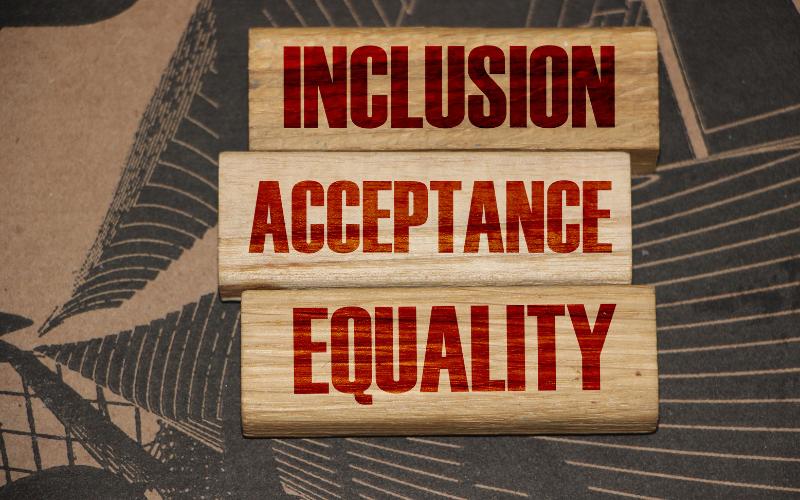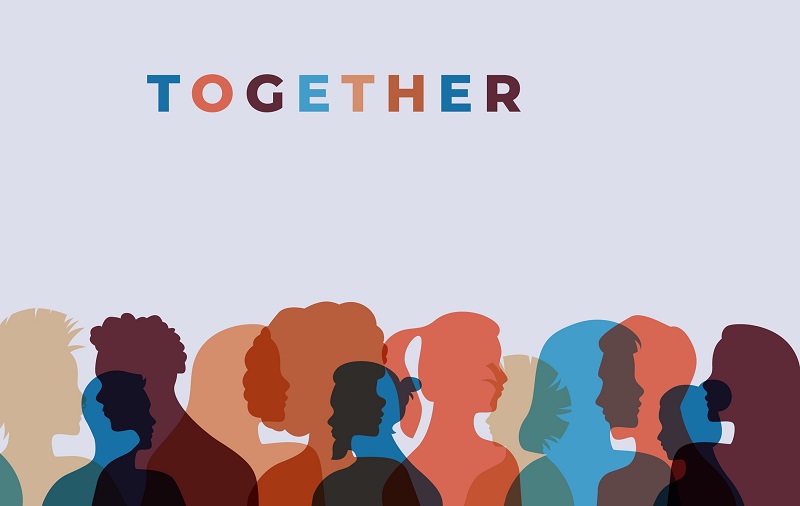You can’t be an inclusive organisation until you’re a diverse one first. To make all employees feel included in a business, they first have to be invited in, so making your recruitment processes open to all is a good start. Bias training and creating safe spaces for underrepresented groups should follow in your diversity and inclusion (D&I) journey.
Here are 20 points to get you started on your journey to workplace diversity:
Make your organisation more diverse in 20 steps
1. Make job descriptions gender neutral
Ensure applicants don’t feel excluded by making all pronouns gender-neutral by changing “he” or “she” to “they.”
2. Put D&I in your mission statement(s)
Whether it’s on your company website or social media, stating a commitment to improving diversity and inclusion could encourage recruitment interest.
3. Remove the “checklist” from job postings
Job advertisements should focus on expectations, not qualifications. Studies show that men are more likely than women to apply for a job even if they don’t meet the qualifications, whereas women tend to apply when they meet 100%. To ensure diverse applications, focus on what you expect candidates to achieve in the role.
4. Reach out to diverse candidates
Be proactive and reach out to candidates with different profiles. Whether that’s through LinkedIn and arranging to meet up, ensure you reach out to a diverse candidate often as this could diversify your talent pipeline and you may end up finding the right person for the job.
5. Make the CV review “blind”
When assessing CVs, remove candidates’ names from the process to reduce unconscious bias. Studies show that people with “ethnic” sounding names have to send out more CVs than others, while female names can be rated lower by hiring managers than male ones despite having the same skills.
6. Be careful of using the term “culture fit”
While it’s important for an organisation to have an easily demonstrated culture, avoid using “culture fit” as a reason for rejection, as this could show unconscious bias. While everyone carries bias in some form, ensure there are other clearer reasons for rejecting a job seeker.
7. Consider colleague referrals
Ask colleagues if they know of promising candidates for jobs as this is a great way to open up your recruitment pool to diverse candidates. Just be careful that they don’t recommend friends from the same demographic, you should challenge them to think outside the box too.
8. Structure your interviews
Structuring elements of an interview could prevent unconscious bias from occurring where managers hire someone simply because they “like” them. Asking candidates the same set of questions gives you a fairer benchmark to evaluate them which could also speed up the recruitment process.
9. Have diverse staff in your hiring team
Include staff from underrepresented groups in your candidate interviews, such as women and people of colour. While it’s important for recruits to get a glimpse of your company’s diversity, don’t tokenise the practice by having the same people present in each interview.
10. Introduce D&I in onboarding
It’s crucial to talk about your company’s commitment to furthering D&I and why it’s important. However, avoid throwing statistics at a new hire as this may overwhelm them and turn them off D&I.
11. Make staff understand their working styles
Encouraging new hires to take assessments will help them discover their working style and help them communicate with colleagues and their different ways of working. Developing awareness of one’s self in relation to others can create a more harmonious and productive workplace.
12. Create a digital “safe space” for D&I
Whether it’s a Slack channel or a digital group on another platform, creating a place where employees can discuss D&I-related subjects is a good idea, staff suggestions could even help you implement better policies.
13. Devise a diverse holiday calendar
Celebrate important dates for underrepresented groups such as Pride Month for the UK’s LGBTQ+ community or Black History Month. Keeping track of religious holidays for minorities is also a good idea. Whether it’s one-day events or month-long occasions, send messages of support and organise events.
14. Pay tribute to staff going the extra mile
Acknowledge team members that are making your business a great place to work beyond hitting targets. Whether they are raising money for charity or acting as a mentor to a colleague, give them a “well done” via a company-wide email or in a meeting and show that your organisation champions community spirit.
15. Support the establishment of groups
ERGs (Employee Resource Groups) are a great way for staff with shared characteristics or lived experiences to discuss issues and provide peer support.
16. Provide flexible hours
Some employees might find adhering to a strict 9-5 stressful, such as working mothers with childcare obligations, where they could leave to join another business that offers this.
17. Hold D&I workshops
Help staff build up knowledge about diversity and inclusion and make them more comfortable about discussing it through knowledge-building workshops. Try using cards with D&I topics to stimulate discussion.
18. Hold unconscious bias training courses
We all carry unconscious bias, but with the right training, we can understand what it looks like and make an effort in lessening its effects. However unconscious bias training shouldn’t be the only D&I initiative a company follows, it should be one aspect of a myriad of efforts, such as the ones above.
19. Try out implicit association testing
Taking an implicit association test is another way to help employees acknowledge their own biases which can help everyone work to create a more diverse and inclusive workforce.
20. Engage your managers in interview training
Telling your managers to structure interviews is one thing, but do they know what questions to ask? Without training on agreed-upon questions that can lessen favouritism and reduce unconscious bias, candidates will continue to be hired based upon the preferences of management, leaving other groups out in the cold.









